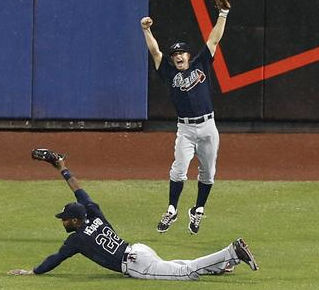MLB Goes Virtual As Stat Apps Enter The Lineup

The cloud and networking technology behind the business of Major League Baseball is increasingly based on virtualization that is replacing the monolithic, physical infrastructure built up over the last decade to stream games, stats, and other new services to fans.
Driving this trend is the fact that the streaming of professional sports in general and big league baseball in particular presents huge datasets that must be manipulated in real time. Rather than a needle-in-haystack-type of big data issue, professional baseball with its many moving parts and voluminous statistics presents huge computational problems requiring more datacenters filled with more servers, blades, and cores.
"It's big data from a computational standpoint," says MLB Advanced Media's CTO Joe Inzerillo.
Inzerillo added during an event sponsored by Cisco Systems that the push for virtualization is "all about the velocity of the market" – and presumably also the velocity of big league fastballs. "To get velocity, you need to reduce 'friction'," he added. Adding more hardware in datacenters is no longer sufficient.
Enter the Unified Computing System (UCS), the blade and rack servers that Cisco launched in 2009, shaking up the IT industry. The UCS machines run much of what's housed in MLBAM's six datacenters around the country. The networking giant claims Major League Baseball is among more than 33,000 unique customers for the UCS machines.
Jim McHugh, vice president of product and solutions marketing for Cisco Unified Computing Systems, said the steady expansion of MLB digital services illustrates the need to expand virtualization of monolithic datacenters as computational requirements grow exponentially along with data – from 15 petabytes of content generated last year to a projected 25 petabytes annually by 2015, Inzerillo estimated.
Over the last several years, MLBAM has expanded from one datacenter to a half dozen around the country as the MLB.com site streams games and other digital services that have caught on with fans.
Again, "it's the race to velocity," added McHugh, noting that virtualization cuts provisioning time. Cisco argues that steps like cloud provisioning are best handled through automation. That leaves more datacenter horsepower available to application developers who, in Inzerillo's words, can "empower the infrastructure."
Software-defined networking along with virtualization are expected to play a growing role in rolling out new apps, particularly since Cisco's UCS can be divvied up to reflect the datacenter production environment. Together, SDN and virtualization can provide a "high-fidelity version of actual production," McHugh claimed.
Still, he acknowledged that bare metal is still needed as more MLB applications come online.
Inzerillo said MLBAM's growth over the decade since the launch of MLB.com has been so fast that it is hard to determine precisely which applications and services are driving the winning streak. Either way, the MLB statistical database will only get bigger as new apps are unveiled.
Baseball's tech czar showed one of the latest applications, the replay of a game-saving, game-ending catch earlier this season by Atlanta Braves centerfielder Jason Hayward. A new overlay of the replay shows the precise distance and trajectory the ball traveled, Hayward's path to the sinking drive and even the outfielder's initial reaction as the ball left the bat. From this, Inzerillo said, MLBAM can crunch the numbers to determine an outfielder's range, even the odds he will catch another ball hit in the gap with the game on the line.
To produce this and other new services, MLBAM measures everything on the field--players, coaches, umpires – three times a second. Measuring a big league fastball is far more computationally intensive, he added, with about 3,000 measurements recorded per second.
What's the next great MLB app? Measuring the angle and velocity of a baseball when it leaves the infield to determine whether it is a homerun. So far, Inzerillo said, the app has erred only once, and that ball bounced off the top of the wall.
Related
George Leopold has written about science and technology for more than 30 years, focusing on electronics and aerospace technology. He previously served as executive editor of Electronic Engineering Times. Leopold is the author of "Calculated Risk: The Supersonic Life and Times of Gus Grissom" (Purdue University Press, 2016).










